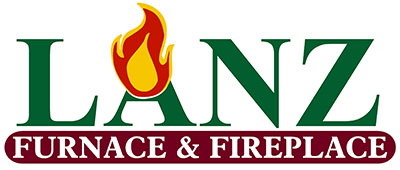
You shouldn’t need to sacrifice comfort or empty your wallet to keep your home at the right temperature during muggy weather.
But what is the ideal temp, exactly? We discuss recommendations from energy experts so you can determine the best temp for your loved ones.
Here’s what we suggest for the most energy-efficient setting for air conditioning in Monroe.
Recommended Thermostat Settings for Summer
Most people find using the thermostat at 72-73 degrees is ideal. However, if there’s a sizeable difference between your indoor and outside temps, your electrical expenses will be greater.
This is our advice based on the U.S. Department of Energy (DOE) and ENERGY STAR®.
While at home: 78 degrees. While that appears too high, there are approaches you can keep your house cool without having the AC on all the time.
Keeping windows and window treatments down during the day keeps cool air where it should be—inside. Some window treatments, such as honeycomb shades or plantation shutters, are made to provide added insulation and improved energy savings.
If you have ceiling fans in your house, the DOE says you can raise thermostat temperatures about 4 degrees hotter without giving up comfort. That’s due to the fact they refresh through a windchill effect. Because they cool people, not spaces, turn them off when you leave a room.
If 78 degrees still feels too warm initially, try running a test for approximately a week. Start by raising your thermostat to 78 degrees while you’re at your residence. Then, steadily turn it down while using the tips above. You could be surprised at how comfortable you feel at a hotter temperature setting.
While away: 88 degrees. There’s no rationale for keeping the air conditioning on all day while your residence is unoccupied. Moving the temp 7–10 degrees warmer can save you anywhere from 5–15% on your cooling costs, according to the DOE.
When you get home, don’t be tempted to put your thermostat under 78 to cool your residence more rapidly. This isn’t productive and typically leads to a more expensive air conditioner bill.
A programmable thermostat is a helpful approach to keep your temperature controlled, but you have to set programs. If you don’t set programs, you risk forgetting to raise the set temperature when you go.
If you want a convenient solution, think over getting a smart thermostat. This thermostat connects with your phone, so it realizes when you’re at your house and when you’re out. Then it instinctively modifies temperature settings for maximum savings. How much exactly? Typically $180 each year on heating and cooling, according to ENERGY STAR.
Another plus of having a smart thermostat? You can use your phone to keep an eye on and regulate temperature settings from just about anywhere.
While sleeping: Around 70 degrees. While ENERGY STAR suggests 82 degrees, that may be too uncomfortable for most families. Most people sleep better when their bedroom is cold, so that’s why the National Sleep Foundation advises 60–67 degrees. But that might be too cool, based on your pajama and blanket preference.
We suggest running an equivalent test over a week, moving your temp higher and steadily lowering it to pinpoint the right setting for your house. On mild nights, you could learn keeping windows open at night and using a ceiling fan is a better idea than using the air conditioning.
More Methods to Conserve Energy During Warm Weather
There are additional methods you can conserve money on cooling bills throughout warm weather.
- Get an energy-efficient AC system. Central air conditioners only are effective for about 12–15 years and get less efficient as they become older. An upgraded air conditioner can keep your residence comfier while keeping electrical costs low.
- Book yearly air conditioner maintenance. Routine air conditioner maintenance keeps your system operating smoothly and might help it work at better efficiency. It may also help prolong its life cycle, since it enables technicians to discover little issues before they create a major meltdown.
- Change air filters regularly. Use manufacturer instructions for switching your air filter. A dusty filter can result in your system short cycling, or switch on and off too frequently, and increase your cooling.
- Measure attic insulation levels. Just about 90% of houses in the USA don’t have enough insulation, according to the Insulation Institute. The majority of southern climates need 13–14” of attic insulation, while northern climates need 16–18”.
- Have your ductwork examined. Ductwork that has loosened over time can leak conditioned air into your attic, walls or crawl space. This can create big comfort issues in your residence, like hot and cold spots.
- Seal openings, doors and windows. Keep humid air in its place by plugging openings. You can also caulk or weather strip doors to keep more conditioned air within your home.
Use Less Energy During Hot Weather with Lanz Furnace and Fireplace
If you are looking to save more energy this summer, our Lanz Furnace and Fireplace professionals can assist you. Give us a call at 608-291-3606 or contact us online for additional information about our energy-saving cooling options.


